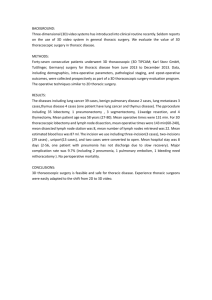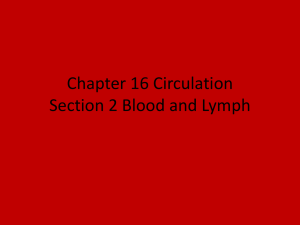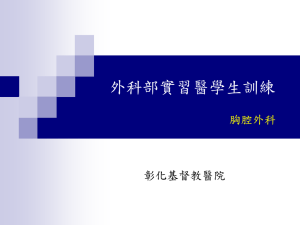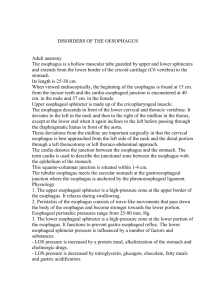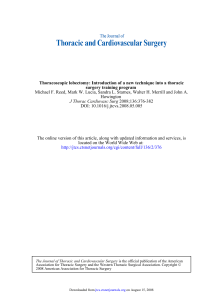个人简历
advertisement
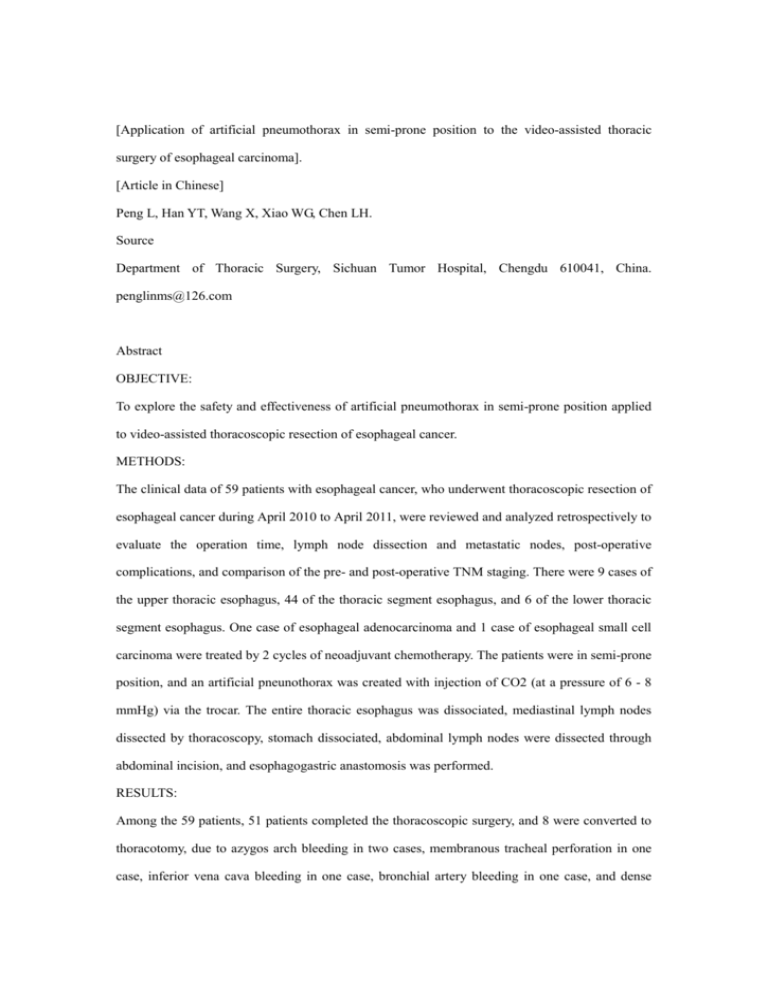
[Application of artificial pneumothorax in semi-prone position to the video-assisted thoracic surgery of esophageal carcinoma]. [Article in Chinese] Peng L, Han YT, Wang X, Xiao WG, Chen LH. Source Department of Thoracic Surgery, Sichuan Tumor Hospital, Chengdu 610041, China. penglinms@126.com Abstract OBJECTIVE: To explore the safety and effectiveness of artificial pneumothorax in semi-prone position applied to video-assisted thoracoscopic resection of esophageal cancer. METHODS: The clinical data of 59 patients with esophageal cancer, who underwent thoracoscopic resection of esophageal cancer during April 2010 to April 2011, were reviewed and analyzed retrospectively to evaluate the operation time, lymph node dissection and metastatic nodes, post-operative complications, and comparison of the pre- and post-operative TNM staging. There were 9 cases of the upper thoracic esophagus, 44 of the thoracic segment esophagus, and 6 of the lower thoracic segment esophagus. One case of esophageal adenocarcinoma and 1 case of esophageal small cell carcinoma were treated by 2 cycles of neoadjuvant chemotherapy. The patients were in semi-prone position, and an artificial pneunothorax was created with injection of CO2 (at a pressure of 6 - 8 mmHg) via the trocar. The entire thoracic esophagus was dissociated, mediastinal lymph nodes dissected by thoracoscopy, stomach dissociated, abdominal lymph nodes were dissected through abdominal incision, and esophagogastric anastomosis was performed. RESULTS: Among the 59 patients, 51 patients completed the thoracoscopic surgery, and 8 were converted to thoracotomy, due to azygos arch bleeding in two cases, membranous tracheal perforation in one case, inferior vena cava bleeding in one case, bronchial artery bleeding in one case, and dense pleural adhesions in three cases. The average operation time of the thoracoscopic surgery was 220.3 (180 - 330) min, and the average operation time for the operation in the thoracic part was 96.6 (80 - 120) min. The average blood loss was 220.8 (100 - 300) ml, the postoperative chest tube was placed for 2 to 4 days (average 3.2), postoperative drainage volume was: 60 - 300 ml (201.6 ml in average) in the 1st day, 30 - 280 ml in the 2nd day, and 0 - 160 ml in the 3rd day. The length of hospital stay was 11.5 days (9 - 14 d). No mortality, anastomotic fistula, and chylothorax occurred in our patient group. One case of arrhythmia, two cases of transient hoarseness, and two cases of pulmonary infection were all improved under symptomatic treatment. The overall complication rate was 9.8% (5/51). 714 lymph nodes were dissected in the 51 patient-group, with an average 14 lymph nodes per patient, including 512 chest lymph nodes (10 on average). The pathology report showed right recurrent laryngeal nerve lymph node metastasis in 6 cases, left recurrent laryngeal nerve lymph node metastasis in 3 cases, subcarinal lymph node metastasis in 2 cases, lesion lymph node metastasis in 1 case, and esophagogastric junction lymph node metastasis in 1 case. CONCLUSIONS: Video-assisted thoracoscopic surgery (VATS) conducted in semi-prone position combined with artificial pneumothorax for the treatment of esophageal cancer is technically feasible and safe, as effective as open thoracic surgery, not only to maintain the intact thorax, significantly lighter postoperative pain, and reduces perioperative complication, but also better wound appearance. The operation is welcomed by patients and meets the requirements of the development of esophageal surgery, and it is a quite ideal treatment of early and intermediate stage esophageal cancer. PMID: 23291075 [PubMed - indexed for MEDLINE] Publication Types, MeSH Terms LinkOut - more resources
